#Milica of Serbia
Explore tagged Tumblr posts
Text
THE SORROWS OF MILICA NEMANJIC OF SERBIA

Though often remembered for her diplomacy and regency (1389-1393), one thing some sources and historians fail to mention about Princess Milica is her struggles with motherhood and widowhood, even through her politics.
Early Life
Milica was born sometime in 1335 as the daughter of Duke Vratko, known in Kosovo legends as Jug Bogdan, a descendant of the Nemanjić dynasty; however, the identity of her mother is unknown.
In her early years, Milica would often stay at the court of her cousins, Tsar Dušan and Tsaritsa Jelena. The couple took a liking to her, sponsored her stay at court, and provided her education, thus she permanently settled at court.
It is at the same court where she had the opportunity to meet Lazar Hrebeljanović, six years her senior and, at the time, a young man of lower nobility working as a puter/stavilac.
According to a legend, Milica met Lazar at the same place where she would later build the Ljubostinja Monastery.
There could be some truth to this tale, but it is worth noting that they were likely introduced at court by the same couple who planned for them to marry.
Marriage to Lazar
Sometime in 1353, Milica and Lazar were married by the wish of Dušan and Jelena and with the blessing of her father. The mere fact that the imperial couple arranged their betrothal suggests that Lazar was a well-respected man enough to join the Nemanjić dynasty by kinship.
Though the marriage was for political purposes, as it elevated Lazar’s status and reputation, it is understood through Milica’s poem that they had grown to hold deep affection and value for each other.
Through her poem “To My Widow, O Bridegroom,” it can be understood that Milica viewed Lazar as someone she desired, admired, and found comfort and protection in.
It is worth mentioning that Milica was one of the many reasons Lazar (r. 1365-1389) was able to elevate himself to the title of Prince (Knez) and expand his realm. While his rivals claimed the rest of Serbia due to their Nemanjić ancestry, Lazar, who was not one of their own, likely had to rely on his wife and children’s claim to the “holy” dynasty to gain the trust of the Serbian people.
Throughout their 36-year-long marriage, the couple welcomed eight children, five daughters and three sons, though only seven made it to adulthood.
Mara Lazarević (b. 1355 - d. 1426)
Dragana Lazarević (b. sometime after 1355 and before 1364, d. sometime after 1396)
Jelena Lazarević (b. 1364/1365 - d. 1443)
Teodora Lazarević (b. after 1365 and before 1371, d. after 1396 and before 1405)
Olivera Lazarević (b. 1372/1373 - d. after 1444)
Stefan Lazarević (b. 1377 - d. 1427)
Vuk Lazarević (b. 1380 - d. 1410)
Dobrovoj Lazarević (died in infancy)
It seems that the couple enjoyed a harmonious and faithful marriage, as there are no mentions of a mistress or illegitimate children that Lazar could have fathered.
Her Widowhood and Regency
Following the defeat at the Battle of Kosovo in the summer of 1389, Lazar was ordered to be beheaded, leaving behind a venerable realm and his wife at the forefront.
Since his son and heir was too young to be entrusted with the duty of ruling, the Principality of Serbia fell into the hands of the Dowager Princess, Milica.
Though it is possible that Milica might have been educated in diplomacy, she certainly did not have any first-hand experience up until that point. Her primary duties as the wife of a prominent ruler were to expand the dynasty by child-bearing, oversee her children’s education, manage the royal court’s income and expenses, and participate in charities such as hospitals and monasteries—duties in which Milica, as a dutiful mother and consort, excelled.
Constantine the Philosopher described her in the following words: “…pious lady, worthy of glory and wise mother, who surpassed many chosen mothers."
At first, Milica, a fearful mother and mourning widow, wasn’t much interested in staying in Serbia and planned to take temporary refuge with Olivera, Stefan, and Vuk, her youngest children, in Dubvronik, this is evident by a document in which the Senate offered her and her children hospitality.
Unfortunately, her plans had to be annulled as the Hungarians advanced their conquest in the north of Serbia and the Ottomans to the south of it. Thus, her final decision was to stay, and sometime between November and December of that same year, she accepted vassalage to the Ottomans despite the reluctance of many Serbian lords, including her son-in-law, Vuk Branković (through Mara), a decision that would cost the Branković family their lands.
The vassalage included loyalty, taxes in the form of soldiers, and lastly, her youngest daughter, Olivera, to be the wife of the Sultan. All requirements were met, as by the spring of 1390, her daughter was married to the Sultan.
Milica continued to rule over Serbia for three more years, until her eldest son Stefan reached adulthood in 1393. That year, she became a nun under the name "Eugenia," yet she continued to advise her son behind the scenes, as evidenced by her diplomatic mission with her cousin and lady-courtier, Jefimija, to Sultan Bayezid in the spring of 1398 when he suspected Stefan of treason.
The issue was soon resolved, and Stefan was forgiven.
Her Motherly Sorrows Though things seemed to be going quietly from 1398 onward, the peace came to an end in 1402, following the Battle of Ankara.
While her beloved son, Stefan, was able to elevate himself to the title of Despot in Constantinople, her son Vuk, wishing for more territory to rule over, revolted against his brother. Additionally, her daughter Olivera and her granddaughters fell into Timurid captivity.
Milica’s daughter Mara, along with her respective children, developed a vendetta against the Lazarević family, whom they blamed for Vuk Branković’s death.
All these stresses likely prompted her to write her poem “To My Widow, O Bridegroom,” dedicated to her husband, Lazar, in 1402. Amid all the motherly worries and family vendettas, it seems that the memory of her deceased husband was what she found comfort in.
Later Life
When the Ottoman civil war broke out between Bayezid’s sons, Vuk and Stefan found themselves on opposite sides of the conflict, supporting different Ottoman rulers.
Milica was able to reconcile her sons; however, after her death, their bloody feud reappeared.
Milica passed away on November 11, 1405, at the age of seventy and was laid to rest in the Ljubostinja Monastery.
Perhaps in her final days, she was at ease since her daughter Olivera was released, and her sons “ended” their vendetta. However, it seems, based on what happened soon after her death, that they only did so for the sake of their mother.
Legacy
Milica has left her mark on Serbian history, being declared a saint in the Eastern Orthodox Church. Today, many statues, church venerations, and streets are named after her.
Poem of Milica to Her Husband

Who is this? Speak into my ears. Is this the one I desired before, my adornment, the gathering for my scattered children? Is this the one whom out of envy the enemies sought to destroy and keep the light of my sight in dark dungeons, and they could not? Is this the one to my widow, O Bridegroom? Come, O Bridegroom, come, and repay those who do me wrong according to their deeds, for they did not understand your coming to my aid. Take up the weapon and rise, and do not delay! Strike with sharpened arrows into their hearts, those who have sharpened them against me, the lawless. I do not tolerate the mockery of those against me. With how many vile sacrifices have they defiled me! Come, avenge me with your blood. Come, be my support in my downfall. Gather my scattered children, whom envy the devil has torn from me. Gather them into my fold, tend to my children, that the wolf may not eat from my flock, that envy may not scatter them, as before, when I was not with them. Do not let them sleep around you. Do not let your legs weaken. Tend to my flock, which I entrusted to you. Drive away from them the lawless barbarians. Do not cease to fight with them for me and my flock. Rejoice, my eye that never sleeps, O Lazar. And again I ascend to the first. Lazar, who surpasses all stars with his shining, Lazar, appropriator to foreigners, preacher of the Trinity, liberator of the captured. Lazar, the unwavering pillar of the church, healer to the sick, clothing to the naked, Lazar, strong duke to the innocents and savior. Rejoice, O Lazar apostolic, I sing to you, and again I say: rejoice. Rejoice, lily that has sprouted from thorns, unconquerable weapon for soldiers. Rejoice, teacher to the hermits. Rejoice, Lazar, to those who sail, steersman and calm harbor. Rejoice, avenger of the oppressed and denouncer of the deceitful. Rejoice, comforter of those who weep, and defender of the poor, and clothing to the naked. Rejoice, strength of beauty, and sustainer of widows. Blessed indeed are you, O Lazar, bless me who blesses you. There is no praise that you are not worthy of, but the mind grows weary...
(Sources: Dve srpske sultanije : Olivera Lazarevic (1373-1444) : Mara Brankovic (1418-1487) by Giljen, Nikola)
#milica of serbia#milica hrebeljanović#milicanemanjic#lazar of serbia#Medieval Serbia#medieval history#medieval poem#eastern orthodoxy#lazarevicdynasty#history#nun
42 notes
·
View notes
Text

Milica Emini 🇷🇸 and Mette Graversgaard 🇩🇰
2024 Århus Sprint'n'Jump
#milica emini#mette graversgaard#team serbia#team denmark#female athletes#hug#butt#athletic girls#athletics#track and field
92 notes
·
View notes
Text

Milica Gardašević 🇷🇸
2023 European Indoor Championships (Istanbul)
#milica gardašević#team serbia#long jump#landing#female athletes#athletics#track and field#istanbul 2023
13 notes
·
View notes
Photo
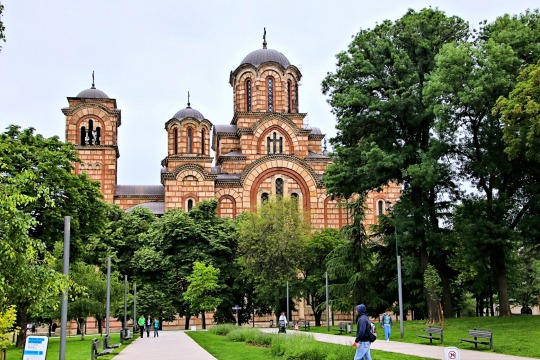

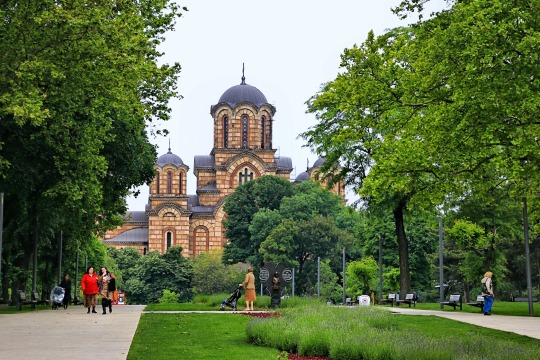
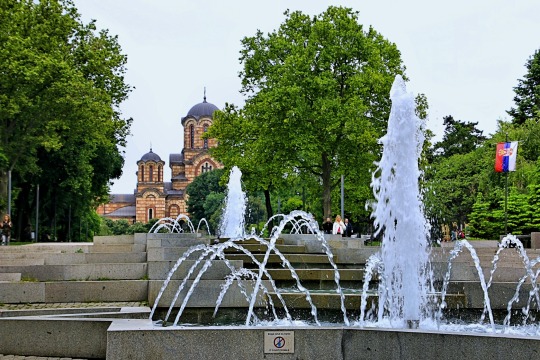
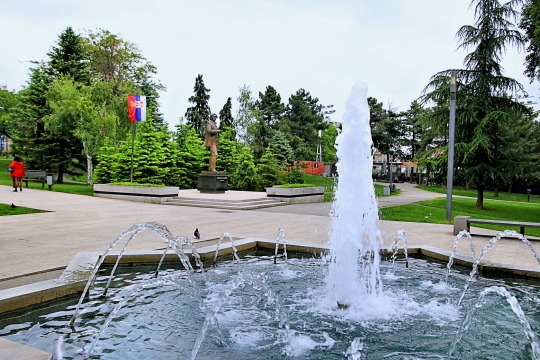
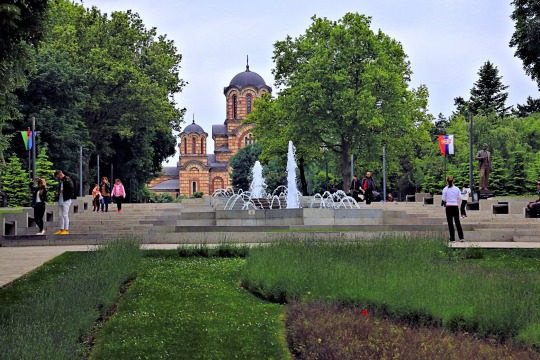

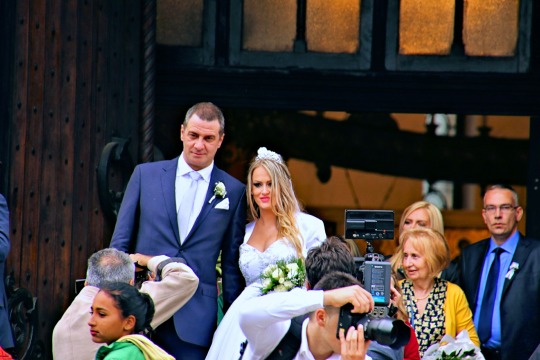
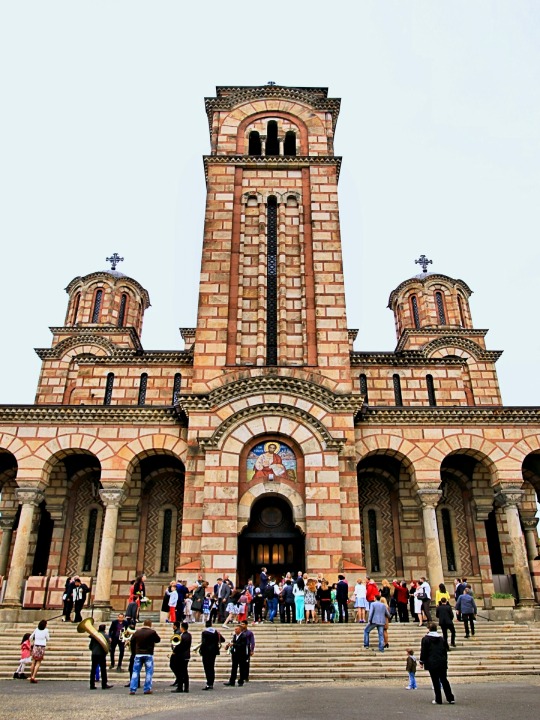
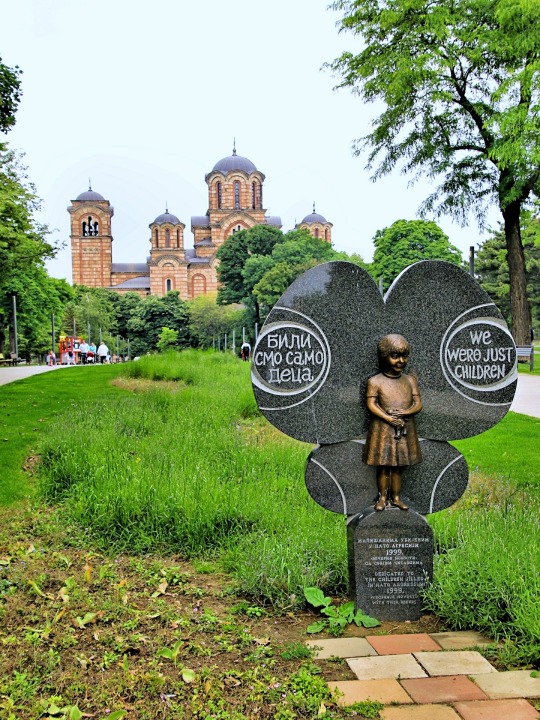
St. Mark’s Church ⛪
#And someday we'll look back and say it was fun#st. mark's church#heydar aliyev#fountain#milorad pavic#statue#cloudysky#wedding ceremony#pontiac firebird#tašmajdan park#milica rakić#belgrade#serbia
3 notes
·
View notes
Video
youtube
Orkestar Doktori - Harmoniku svira Milica Gogin 💖 Hotel Zepter (april 2023)
0 notes
Text
Pirot Kilim ornaments

Чурлињак (čurlinjak) - The most basic motif, representing a cross section of the lower part of the whisk for mixing ingredients (called čurlinjak).
Врашко колено (Devil's knee) - The motif comes from the pre-Christian Slavic religion. It symbolises movement in circles (kolo dance) and the flow of life, and provides strength, bravery and defense against evil.
Корњача/жељка (turtle) - The most popular pattern of the Pirot Kilim. It symbolises durability and longevity and brings fertility, healthy life and protection from danger.
Ченђели (čenđeli) - Represents a grappling hook mounted on a wooden pole, used for hanging things.
Бомбе (bombs) - It beard this name due to its semblance to handgranades, but the motif has existed since before handgrandes were invented. It provides strength and energy, especially to men, so the kilims with this motif were usually gifted to boys for their life milestones.
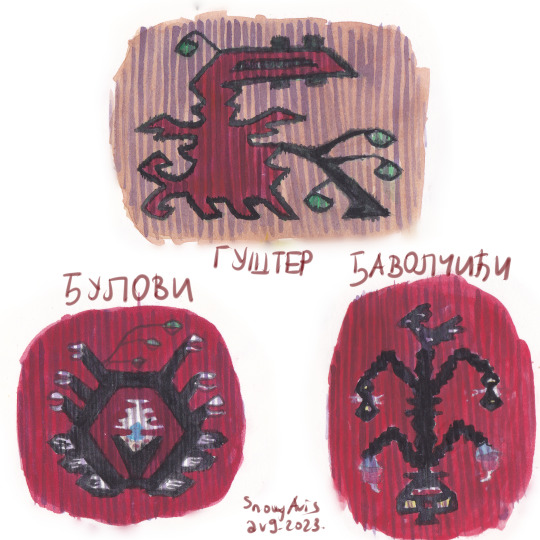
Гуштер (lizard) - This pattern probably originates from modified depictions of dragons. It represents laziness and indifference, but also change, flexibility and adaptation to the world.
Ђулови (roses) - It represents a stylised cross section of a rose, showing both the exterior as well as the pistils, anthers and seeds inside. It is symbolises a young woman and her beauty. Kilims with this motif are often gifted to daughters by their mothers. Different variations of this motif exist, some of which (the roses on shackles) were, according to legends, made as rebellion of kilim weavers against the Ottoman repression.
Ђаволчићи (Little Devils) - The devil is represented as a human figure turned upside down, with the devil's head turned towards the underworld, and a bird on the other side representing the heaven.

Гугутка (dove) - Birds protect from evil spirits and diseases and connect the earth and sky. It represents family harmony, love, peace and joy, and as such kilims with this motif are often gifted to new homeowners. This motif can often be seen arranged around a pole, representing a tree full of birds.
Атапот (atapot) - It represents an octopus, and the name probably came from a distorted pronunciation of the word oktopod (octopus).
Француске бомбоне (French candies) - This motif was probably inspired by silk candy wrapped in decorative paper and brought to Serbia from distant lands. According to a folk story, when the French soldiers liberated Pirot in the First World War in 1918, the kilim weavers designed this pattern as a sign of gratitude.
Столица (chair) - It represents an antique chair and the inspiration for this pattern came from the everyday life of the kilim weavers.
Тиче (tiče) - It represents a small bird.
Source: "Ornaments of Serbia: the Pirot Kilim" by Milica Živadinović. Art by me.
#art#water color art#serbia#serbian#kilim rug#folklore#balkans#balkan#traditional art#water colour art#slavs#slavic#south slavic
392 notes
·
View notes
Text

EDIT 14/10/2024: ADDED MALTA THIS IS MY MAP OF EUROPE, I am so proud of it actually, I LOVE IT SO MUCH, The amount of designs here have literally taken years to finally have all together, so yeah… NAMES: Albania- Erion Hoxha Andorra- Laia Font Austria- Francizka Schwarz Belarus- Tatsiana Romachuk Belgium (Brussels)- Monique de Smet Belgium (Flanders)- Noah Mertens Belgium (Wallonia)- Genevieve Lambert Bosnia and Herzegovina (Bosnia)- Damir Galijašević Bosnia and Herzegovina (Herzegovina)- Zlata Hodžić Bulgaria- Boris Dimitrov Croatia- Darko Perković Cyprus- Androula Christodoulos Czechia (Bohemia)- Matouš Černý Czechia (Moravia)- František Novák Denmark (Denmark)- Helga Christiansen Denmark (Kingdom)- Kirsten Christiansen Finland- Mikko Hakanpää France- Léo Toussaint Estonia- Merike Haavik Germany (east)- Klaus Schmidt Germany (West)- Hanz Schmidt (NOT IN THE MAP) Greece- Leonidas Kostopoulos Hungary- Istvan Erdei Iceland- Arnkatla Einarsdóttir Ireland- Séamus O'Connell North Italy- Nicoletta Bianchi South Italy- Francesco Bianchi Kosovo- Luljeta KrasniqI Latvia- Liene Liepiņa Liechtenstein- Karin Schädle Lithuania- Paulius Dambrauskas Luxembourg- Tom Hoffman Malta- Tessie Abela Moldova- Vasile Stratulat Monaco- Leonardo Crovetto Montenegro- Milica Vujović The Netherlands (The Netherlands)- Daan Van Dijk The Netherlands (Kingdom)- Marjolein Hendriks (NOT IN THE MAP) North Macedonia- Zivka Nikolovska Norway- Magnar Eriksen Poland- Anastazja Kowalska Portugal- Guilherme Mendonça Romania- Ecaterina Popescu Russia- Yuri Ivanov San Marino- Ing Gasperoni Serbia- Zoran Damjanić Slovakia- Viera Lukáčová Slovenia- Alenka Krajnc North Spain- Gaspar de León Serrano South Spain- Ester Sánchez Garcia Sweden- Herbert Ekenberg Switzerland- Rudolph Gerber Ukraine- Nadiya Bondarenko United Kingdom (England)- Annabeth Wright United Kingdom (Northern Ireland)- Finn Doherty United Kingdom (Scotland)- Alistair Douglas United Kingdom (UK)- Olivia Brown (NOT IN THE MAP) United Kingdom (Wales)- Harriet Griffiths The Vatican- Giuseppe Esposito Edit- 02/11/2024... CHANGED SLOVAKIA'S NAME FROM DARINA TO VIERA
#art#countryballs#countryhumans#hetalia#humanization#ART#oc#aphoc#hetalia oc#aph oc#hetaliaoc#europe#aph europe#hws#countryhumans europe#eu#Gracheee random#TNC#TNChronicles#The Nation Chronicles#The Nation Chronicles Europe#TNC Europe
29 notes
·
View notes
Text
My main OC!
~ GENERAL INFO ~
Name: Layla Avalin
Nicknames: Lay’s, Lay-Lay, Provoloka
Birthday/DOB: 6th January 1991
Age: Early 20s
Nationality: British-Serbian
Gender: Non-Binary
Pronouns: Any pronouns
Sexuality: Bisexual
When the story is mainly set: 2012-2014
~ APPEARANCE + PERSONALITY ~
Height: 6"1 / 185cm
Weight: 164lbs
Hair: Shaggy brunette hair, natural blonde streaks (mostly on fringe), very thick, length is at the mid to bottom of their neck.
Eyes: Sort of teal colour? (It changes a lot but it’s basically that)
Personality: On the surface, Layla can come across as egotistical, overly extroverted, competitive, and just plain annoying. These traits act as a barrier, signalling to others that they might not want to be friends with them. However, once you get to know her better, Layla reveals his true self: passionate, observant, friendly, and especially loving. In relationships, they struggle with the fear of abandonment, leading to clinginess and insecurity. She deeply fears being neglected by her partners or friends.
MBTI: ENTP
~ FAMILY / RELATIONSHIPS ~
Father: Detective Jeremy Avalin
Mother: Dr. Milica Avalin (M.N: Ristovski)
Siblings: N/A
Grandfather (Dad’s side): Michael Avalin
Grandmother (Dad’s side): Bella Rossi
Great-Grandfather (Grandfather’s side): Charles Avalin
Great-Grandmother (Grandfather’s side): Anastasia "Anna" Avalin
Great-Grandfather (Grandmother’s side): Vincent Rossi
Grandfather (Mum’s side): Sergej Ristovski
Grandmother (Mum’s side): Ljiljana Ristovski
Cousin (Mum’s side): Demetri Ristovski
Ex Spouse (M. 2012 - D. 2013): Xavier Livingston (Bad terms)
Current Spouse (M. 2016): Issac Johnson
~ INTERESTS ~
Layla has always had an interest in mathematical things, especially physics. Excelled in that topic and they have always had an interest in it. She also has a passion for engineering, and they have a shelf of little robots they made. He also enjoys crosswords and sudoku, and listens to music while doing it.
~ BACKSTORY LEADING UP TO ADULTHOOD ~
It should be very important to note that Layla belongs to the Avalin family. The Avalin family are directly linked to Avalinthea, the Saxanian God of Stones. Layla and her family are unaware of this, but have always had connections to the stones. (Basically the power system in the universe :))
Layla grew up in an environment where they were almost always "second place" to people, especially their own parents. Their parents have a condition called "Amorisis Syndrome" which makes them obsessively in love with each other, to the point where they would manipulate, harm and even kill others for each other (basically they’re Yandere for eachother). Their condition doesn’t apply to Layla, so they cannot feel as strongly for Layla than they do eachother. Along with this, Layla was quite unpopular at school, inserting themselves into friendship groups that didn’t even really want her there, causing more thoughts of “I will never be first place to anyone.”
Layla did have a childhood best friend, Oliver, however they rarely saw each other, due to Oliver’s family being significantly more wealthy and higher class than Layla’s. The two moved to New York when they turned 20.
~ FUN TRIVIA :D ~
- Layla got all D’s on his GCSEs except for physics, chemistry and maths, to which she got A*s
- Owns a Wii, and plays on it when they have free time, ends up becoming TOO good on it.
- If they had the money, they would go to Geneva, Switzerland.
- He enjoys collecting stickers, but often forgets to actually stick them on stuff.
- Often goes to Serbia for Christmas with her parents to see her grandparents, playing in the snow with Demetri is often their highlight of the year.
- Their scarf was given to them by Demetri before he went missing.
~ MOODBOARD ~

~ PLAYLIST ~
#ocs#artists on tumblr#oc art#original character#original characters#ask me anything#oc reference#oc ref sheet#artist#Spotify#Layla Avalin
7 notes
·
View notes
Text
I never expected to be a person who has opinions about commentators on sports (3 years ago I had never heard the term “color commentator” before), but I’ve been watching so much of the Olympics that I have experienced some true highs and lows.
the women’s rugby commentators were very fun, I got super into the kayak and canoe slalom in part because of the commentators
the male commentator on the women’s hammer throw final made me want to SCREAM. he literally used the term “histrionics” TWICE to refer to the hammer thrower’s yells. which is fully a part of the sport and also just a wildly misogynistic thing to say. there were other dumb things he said, like saying one of the (noticeably thinner) women had a “nice athletic shape about her” when it’s like… hey buddy, they all do! they’re fucking Olympians! further, he kept going on and on about how this wouldn’t be a very exciting hammer throw final and again, sir don’t tell us that. your fucking job is to make us excited. the female commentator with him sounded genuinely excited, so what’s up?
but nevermind all that, because I started watching Taekwondo yesterday and I have found the greatest commentator duo of all time.
the first commentator is a Scottish man who appears to casually make sing-song-y rhymes without thinking about it. here are some excerpts:
“First to two will do to make it through.”
“Toes on the nose, that’s how it goes!”
“The socks they wear have sensors on them…you could call it TECH-won-do if you wanted”
“If you're watching this at work in secret on a laptop, good on you, you're getting paid to watch this” (lmao call me out sir)
“She enjoys fashion and beauty, and in the beauty of the match can she fashion a win for the bronze medal?”
“You have to get the reach plus the screech to get the point.”
“In France, at the big dance, she gets the chance to go for bronze”
I have no idea who he is but he is delightful.
he is joined by Milica Djuricić (neé Mandić) a two-time gold medalist in women’s +67kg Taekwondo for Serbia. she is much more technical and also hilariously nonchalant.
“There is a spin around kick and now I think we will need a doctor”
the reason I know her name and not his is that he keeps saying it.
“Ok, Milica Djuricić, two time gold medalist… what are these athletes thinking right now?”
I suspect it’s because he is a more experienced commentator than she is (she retired from fighting after the 2020 Olympics) and he’s trying to invite her insight deliberately. the other thing about her being a former athlete is that she is way quicker to disagree with the referees, and it’s hilarious.
“To me, (x) is fighting better, but the scores do not reflect this.”
I don’t know how much longer the taekwondo is going on, but if you want some amusing commentary, please tune in! I knew nothing about this sport beforehand and now I am invested.
#olympics#Olympics 2024#I have done nothing but watch the Olympics I truly care about nothing but the Olympics so#DONT TEXT unless it’s about the Olympics :)
10 notes
·
View notes
Photo








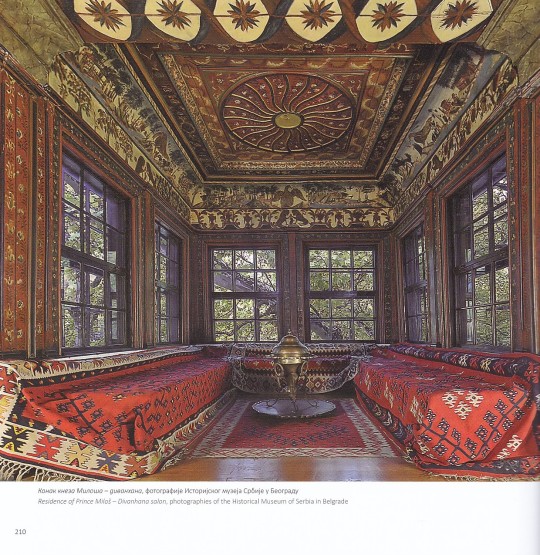
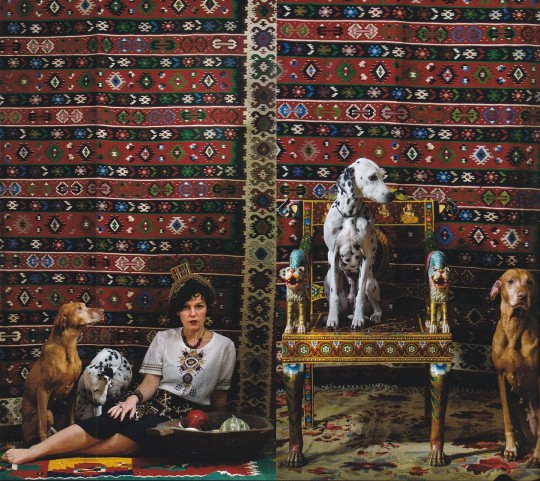
Ormanents of Serbia The Pirot Kilim
Tradition woven with feelings and craft
Milica Živadinović
Laguna, Belgrade 2022, 272 pages, 22 x 23 cm, Hardcover, ISBN 978-86-521-4625-3
euro 60,00
email if you want to buy :[email protected]
Searching for the origin and possible meanings of the Pirot kilim ornaments, this book offers a particular overview into the tradition of this female craft. This particular collection of rare and carefully curated photographs has been presented for the first time, especially for this luxury edition. The beauty, harmony and craftsmanship of the kilims inspire and amaze, and their aesthetics enrich contemporary interiors. The Serbian tradition is rich in colorful symbols, and some of the most famous ones are found on Pirot kilim-rug.The Pirot carpet is known in the world for its beauty and quality, the weaving technique, the raw material from which it is made and loomed, the stylized ornamentation, the richness of patterns and colors, durability. The peculiarity of the Pirot rug is that it has no reverse, is smooth and identical on both sides, which is achieved by firm weaving of the weft. They are woven in the technique of kneeling by making multicolored weft threads with patterns that are narrower than the entire width of the weave.
30/12/22
orders to: [email protected]
ordini a: [email protected]
twitter: @fashionbooksmi
instagram: fashionbooksmilano, designbooksmilano tumblr: fashionbooksmilano, designbooksmilano
#Ornaments Serbia#Pirot Kilim#female craft#weaving technique#raw materials#stykized ornamentation#richness patterns#richness colors#no reverse#tradition woven#textiles books#fashion books#fashionbooksmilano
22 notes
·
View notes
Text
Serbian Prime Minister-designate Milos Vucevic announced on Tuesday that Aleksandar Vulin, the US-sanctioned, pro-Russian former head of Serbia’s Security Information Agency, will be one of the deputy prime ministers in his new cabinet.
Another pro-Russian politician who has been placed under US sanctions, Nenad Popovic, will be a minister without portfolio in the incoming government.
Milica Djurdjevic Stamenkovski, leader of a far-right party that did not get enough votes to enter parliament, was also appointed as minister of demography and family care.
Meanwhile Serbia’s current ambassador to Washington, Marko Djuric, will be the country’s new foreign minister, Vucevic said as he announced his cabinet six months after the general elections.
Predrag Petrovic, research director at the Belgrade Centre for Security Policy, told BIRN that there is nothing novel in the new cabinet, which will work to the command of President Aleksandar Vucic as before.
He said the appointment of Djuric as foreign minister is an attempt to get closer to the West, while the appointment of Vulin maintains close relations with Moscow.
“It’s about reconciling different interests,” Petrovic said.
“Vucic himself coined the name ‘double-dealing politics’ – you give something to some, you give something to others, but you’re actually trying to deceive both,” he added.
Petrovic argued that it isn’t good for Serbia that two people who have been blacklisted by the US have been given seats in the cabinet.
“The mitigating circumstance for the government is that they do not occupy a specific ministry, especially not some important ministries,” he said.
In mid-July 2023 the US Treasury Department imposed sanctions on Vulin, accusing him of involvement in various corrupt activities. The Treasury Department’s Office of Foreign Assets Control claimed the pro-Russian politician has been implicated in transnational organised crime, illegal narcotics operations and misuse of public office.
The US also accuses incoming minister Popovic of having murky connections to Russia.
The Office of Foreign Assets Control State Department said in a statement in November 2023 since the 1990s, Popovic has “used his Russia-based businesses to enrich himself and gain close connections with Kremlin senior leaders”.
It also claimed that Popovic “continues to use his Kremlin connections to secure business for his holdings, most of which operate in the consulting, real estate, and electronics sector of the Russian economy”. Popovic also served as minister without portfolio from 2017 to 2022.
Part of the outgoing cabinet remain in office, either holding the same or different ministerial posts.
Vucevic told media that, while choosing his ministers, “we also took into account who can respond to the tasks and challenges that await the government of the Republic of Serbia”
“I believe that this cabinet will be worthy of the challenges and tasks ahead of us,” he added.
As expected, Milica Djurdjevic Stamenkovski, the leader of far-right party Zavetnici (Oathkeepers), which did not make it into parliament in December’s elections, was given a post in the government, leading the Ministry for Demography and Family Care.
The health minister will be Zlatibor Loncar, who also held the post from 2014 to 2022.
Investigative media in Serbia have been reporting for several years about Loncar’s alleged ties to the so-called Zemun Clan, a notorious criminal gang from the 1990s and early 2000s whose members were convicted of various crimes, including the assassination of Serbian Prime Minister Zoran Djindjic in 2003.
The Serbian parliament will debate the new government on May 1.
Milos Vucevic, the country’s former minister of defence, was named as the new prime minister by President Vucic on Instagram on March 30.
Vucevic, who is succeeding Ana Brnabic as prime minister, is known as a man trusted by Vucic, who also gave him the position of president of the ruling Serbian Progressive Party, SNS in May 2023.
Vucic described his premier-in-waiting as having “the professional and personal qualities to perform the function of prime minister”.
On his appointment as SNS chief in 2023, Vucevic displayed his fealty to Vucic, promising that the party would continue his work.
“Our policy will not change, we remain the party that is the engine of the development of our homeland… and the party that will be the most reliable partner of the president of the republic, Vucic,” he said.
Serbia’s general elections, held on December 17, 2023, were marked by numerous irregularities according to reports by the European Parliament, the OSCE’s Office for Democratic Institutions and Human Rights and domestic NGO CRTA.
1 note
·
View note
Text
LAZAREVIC SISTERS III
Princess Jelena Lazarevic
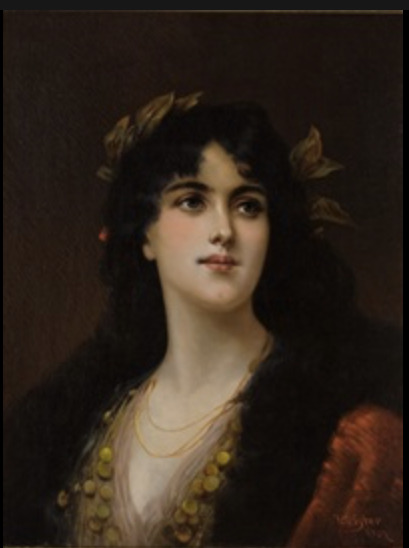
Early Life
Often referred to as “Jela” or “Lady Lena,” Jelena Lazarevic is renowned as a determined, beautiful, and courageous woman. She was born as the third in line of the royal daughters of Prince Lazar. It is noted that she was about 39 years old in 1403, this determines that she was born around 1364-1365.
Jelena was most than likely born in Prilepac and raised there for some time before moving to Krusevac where she continued her strict education under the guide of her mother; Milica and aunt; Jefimija.
As for the rest of her early life, nothing is known other than plausible education and living situation. The first information we have of her is in her early twenties when she married Durad II Balsic.
First Marriage
Around 1386 or 1387, Durad; Lord of Zeta, recognized Lazar’s as his ruler and lord and so to officialize his authority over the state of Zeta Lazar married his eldest unmarried daughter to him.
The couple had a single child together, Durad’s father namesaker and future successor; Balsa Balsic also known as ‘Balsa III’.
The purpose of this marriage remain political and sole purpose was to create an alliance as well as heirs. There are no mention of a possible love marriage between the two of them. Though it is noted that Durad often entrusted his wife to manage state affairs.
In early 1392, in fear of the uprising Turks, Durad sent word for his wife arrival in Dubrovnik in order to protect her and his heir, and though the government of Dubrovnik were aquiring the necessities for Jelena, she never arrived.
In September of that same year there was talk about her upcoming arrival, but she never came, yet again.
It was not until November of 1396 that Jelena would reach out to the Dubrovnik authorities for a ship to escort her to a meeting with Sandalj Hranić (who will later on become her second husband) as he had been fighting against the Balsic family for some time at that point.
This meeting might be one of tasks given to her by her husband. Jelena was noted to have a significant influence on the man.
As Regent of Zeta
In 1403, her late husband; Durad, passed away, and of course; the wise Jelena wasted no time and made her appearance as a subtitute ruler in full light. Due to her son’s inexperience and age, Jelena acted as his regent.
Many of the territories that belonged to Zeta were under Venitian rule and Jelena decided to reclaim said territories.
For five years she fought the Venitians to defend Zeta and her son’s inheritance despite facing harsh-trials. Through the uprising threats and council of disagreements, she followed as suited the interest of Zeta and her son.
In the reports of Jelka Redep in her book: КЋЕРИ КНЕЗА ЛАЗАРА ИСТОРИЈСКА СТУДИЈА ПОГОВОР…
“Jelena’s idea of rebellion was not just an empty desire. In the first days of 1405, a rebellion was planned in Zeta. Skadar revolted against Venitian rule, and the Prince barely escaped with his life. Durazzo also rose up in arms and recognized Jelena’s son as their ruler.”
In the early birth of this rebellion Jelena reached out to her younger brother; Despot Stefan Lazarevic, for aid, but due to his close-knit relationship with the Venitians he was unable to help her. Yet, she continued in her conquest with a temporary help from the Turks.
[Her own brother, the despot Stefan, was friends with both the Venetians and the Hungarians. Only the Turks agreed to help her, but even they only for a short time. Jela did not agree to her brother's proposals to reconcile with Venice, but persistently continued to fight, until 1406, when she had to agree to negotiations that lasted more than three years.
Miodrag Purković spares no words when he talks about how energetically and uncompromisingly Jela, as a widow, fought for the freedom of her country and her son's inheritance. She always took all the "blame" on herself instead of her son. In order to protect him, at the end of 1409, she went alone to negotiations in Venice, where she was kept for three months.
Purković points out how brave Jela was during those negotiations, and especially points to the fact that she was "neither confused nor afraid", unlike her mother, who once found herself in a similar situation before Bayazit in 1398. } - Dve srpske sultanije : Olivera Lazarevic (1373-1444) : Mara Brankovic (1418-1487) by Nikola Giljen, pg 169
Yet, despite this “Peace” Balsa continued his fight against the Venitians, but this only cost him great loss in territory.
Second Marriage
Prior to this marriage Duke of Bosnia; Sandalj Hranić (remember him?), who used to be married to a kin of Hrovoje Vukcic separated from his wife after this one's family lost influence in their political position.
Wishing to be associated with someone of more influence, Sandalj would later step a foot further and annulled his marriage to his wife; Katerina, since they shared no children, and instead offered for Princess Jelena Lazarevic or as she was known at the time Jelena Balsic; who at the time was the sister of a great ally of Sigismund.
This marriage, which was Sandalj's third marriage, benefited all parties involved, as Sandalj regained his position, Jelena now had one less enemy to worry about, and lastly Stefan was able to tie his new brother-in-law to him politically.
Strangely enough, this marriage could be considered a content union between the two. Sandalj is said to have been enchanted by his new bride/former enemy and to hold his step-son to high status and protect him at times.
Jelena is credited for this as she was known to have a powerful influence on this husband of hers who some would describe as an ‘arrogant man’.
Later Life
In April of 1421, the exhausted Balsa met with his uncle in Belgrade and transfered the remaining of his lands under this one’s protection. He soon passed away that same year. It is unkown how Jelena reacted to the news.
In 1423, she was visited by her youngest sister; Olivera, though this one might have been there more for diplomatic reasons to get news on her brother-in-law than for the sake of meeting her sister after 30 plus years apart.
Not much information has been recorded about Jelena’s where abouts until 1425. That year, the threat of the upcoming Turks were increasing and so as a result of this situation, Sandalj moved his family, including his wife, to Dubrovnik for protection.
After her husband death in 1435, she retired from state affairs as the state passed down to her late husband’s nephew, and she obviously could not have any influence on him.
She must have retired to her husband’s court in Novi, where it is assumed she lived an aristocratic lifestyle up and until her death.
Jelena passed away in 1443, living a good amount of her properties to her granddaughter and namesaker; Jelena. She left 200 ducats and a gilded icon to her only living sibling; Olivera, to be spent on a memorial for her as well as distribution to the poor.
Issue
Balsa III Balsic
( Sources: “КЋЕРИ КНЕЗА ЛАЗАРА ИСТОРИЈСКА СТУДИЈА ПОГОВОР” by Jelka Redep, Dve srpske sultanije : Olivera Lazarevic (1373-1444) : Mara Brankovic (1418-1487) by Nikola Giljen)
#Lazarevic Dynasty#Lazarevic#14th century#15th century#arranged marriage#Serbia#Moravian Serbia#History#geology#Lazar of Serbia#Lazar#Milica of Serbia#Đurađ II Balšić#serbian history#histoire#Jelena Lazarevic#Jelena Balsic#Stefan Lazarevic#jelenalazarevic#lazarevicsisters
46 notes
·
View notes
Text
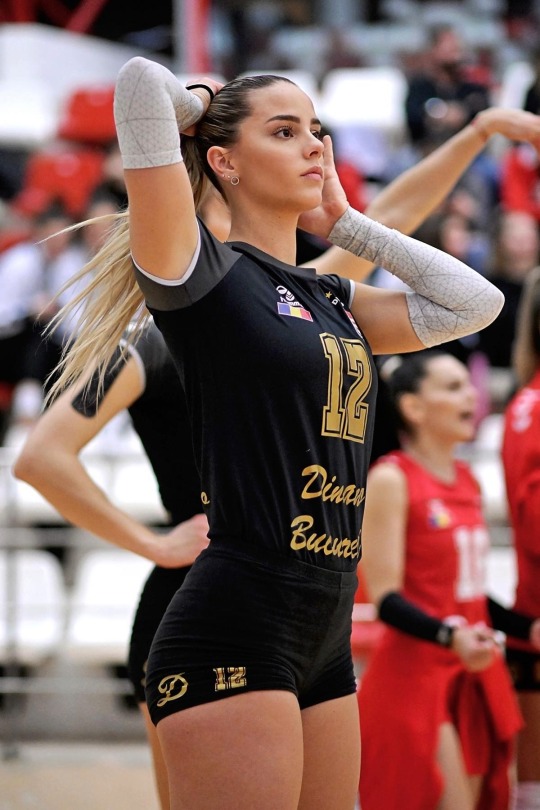
Milica Tasić (Dinamo București)
52 notes
·
View notes
Video
vimeo
Mushroom Timelapse Photogrammetry | Forager | Houdini HIVE Education + Studio Edition from SideFX Houdini on Vimeo.
Elie and Winslow will discuss their new volumetric time-lapse mushroom experience Forager, and how Houdini's unique and powerful toolset help make it possible.
Elie Zananiri is an award-winning new media artist, designer, computer programmer, and educator. He specializes in large-scale installations, graphics programming, and virtual reality that redefines social boundaries in public spaces through immersive experiences and generative compositions. Elie has been the recipient of numerous grants and awards, notably an Emmy Award for Zero Days VR (2018). Zananiri’s work has appeared in numerous exhibitions around the world, including the Sundance Film Festival (USA), Tribeca Film Festival (USA), Sónar (Spain), Venice Biennale (Italy), Plásmata Exhibition (Greece), Typ09 (Mexico), and Resonate (Serbia). Elie currently teaches at New York University's Interactive Telecommunications Program (ITP) and develops media exhibits for the American Museum of Natural History. He is a regular contributor to open-source software projects, including the Processing and openFrameworks creative coding toolkits.
Winslow Porter is an award-winning director, producer and creative technologist specializing in virtual/augmented reality as well as large-scale immersive installations. Winslow formed the pioneering, new media studio the New Reality Company in 2016 with Milica Zec, creating the critically-acclaimed cinematic VR experiences Giant and Tree. He is currently a Cultural Leader at the World Economic Forum, a seven-time mentor at the New Museum Incubator, a founding member of ONX Studio and an adjunct NYU Tisch professor. Winslow is also an artist in residence at the Smallhold Mushroom farm in Brooklyn, creating an immersive experience featuring the first volumetric time-lapse of mushrooms growing called Forager, featured at SIGGRAPH 2022 and Unreal Fest 2022 (forager.earth)
4 notes
·
View notes
Text
2024 olympics Serbia roster
Athletics
Elzan Bibić (Karajukića Bunari)
Armin Sinančević (Prijepolje)
Angelina Topić (Belgrade)
Milica Gardašević (Novi Sad)
Ivana Španović (Zrenjanin)
Világos Adriana (Vrbas)
Basketball
Uroš Plavšić (Ivanjica)
Filip Petrušev (Belgrade)
Nikola Jović (Belgrade)
Bogdan Bogdanović (Belgrade)
Vanja Marinković (Belgrade)
Ognjen Dobrić (Belgrade)
Nikola Jokić (Sombor)
Vasilije Micić (Kraljevo)
Marko Gudurić (Priboj)
Dejan Davidovac (Zrenjanin)
Aleks Avramović (Čačak)
Nikola Milutinov (Novi Sad)
Marko Branković (Novi Sad)
Strahinja Stojačić (Novi Sad)
Dejan Majstorović (Stari Banovci)
Mihailo Vasić (Belgrade)
Ivana Raca (Athens, Greece)
Saša Čađ (Sarajevo, Bosnia & Herzegovina)
Nevena Jovanović (Kraljevo)
Yvonne Anderson (Columbia, Missouri)
Dragana Stanković (Ljubovija)
Jovana Nogić (Belgrade)
Maša Janković (Vrbas)
Aleksandra Katanić (Smederevska Palanka)
Angela Dugalić (Des Plaines, Illinois)
Tina Krajišnik (Sarajevo, Bosnia & Herzegovina)
Mina Đorđević (Belgrade)
Nadija Smailbegović (Novi Pazar)
Boxing
Vakhid Abbasov (Belgrade)
Sara Ćirković (Bratunac, Bosnia & Herzegovina)
Natalia Shadrina (Yakutsk, Russia)
Canoeing
Anđelo Džombeta (Novi Sad)
Marko Dragosavljević (Novi Sad)
Marko Novaković (Bečej)
Vladimir Torubarov (Novi Sad)
Anastazija Bajuk (Sremska Mitrovica)
Dunja Stanojev (Novi Sad)
Milica Novaković (Novi Sad)
Marija Dostanić (Sremska Mitrovica)
Cycling
Ognjen Ilić (Aranđelovac)
Jelena Erić (Kraljevo)
Judo
Strahinja Bunčić (Banja Luka, Bosnia & Herzegovina)
Nemanja Majdov (Istočno Sarajevo, Bosnia & Herzegovina)
Aleksandar Kukolj (Belgrade)
Milica Nikolić (Belgrade)
Marica Perišić (Temerin)
Milica Žabić (Belgrade)
Rowing
Nikolay Pimenov; Jr. (Moscow, Russia)
Martin Mačković (Subotica)
Jovana Arsić (Novi Sad)
Shooting
Lazar Kovačević (Jagodina)
Damir Mikec (Belgrade)
Zorana Arunović (Belgrade)
Swimming
Justin Cvetkov (Zrenjanin)
Andrej Barna (Subotica)
Velimir Stjepanović (Dubai, U.A.E.)
Nikola Aćin (Zrenjanin)
Anja Crevar (Pančevo)
Table tennis
Izabela Lupulesku (Belgrade)
Taekwondo
Lev Korneev (Belgrade)
Stefan Takov (Belgrade)
Aleksandra Perišić (Belgrade)
Tennis
Novak Đoković (Belgrade)
Dušan Lajović (Srem)
Volleyball
Milorad Kapur (Ravni Topolovac)
Pavle Perić (Prokuplje)
Uroš Kovačević (Kraljevo)
Petar Krsmanović (Čačak)
Marko Ivović (Ljig)
Nikola Jovović (Novi Sad)
Miran Kujundžić (Subotica)
Aleks Atanasijević (Belgrade)
Dražen Luburić (Novi Sad)
Marko Podraščanin (Novi Sad)
Vuk Todorović (Belgrade)
Aleksandar Nedeljković (Vranje)
Bianka Buša (Vrbas)
Katarina Lazović (Belgrade)
Bojana Drča (Belgrade)
Mina Popović (Kraljevo)
Aleksandra Uzelac (Zrenjanin)
Maja Ognjenović (Zrenjanin)
Maja Aleksić (Užice)
Jovana Stevanović (Belgrade)
Silvija Popović (Belgrade)
Tijana Bošković (Bileća, Bosnia & Herzegovina)
Bojana Milenković (Belgrade)
Sara Lozo (Jagodina)
Water polo
Radoslav Filipović (Novi Sad)
Dušan Mandić (Belgrade)
Strahinja Rašović (Belgrade)
Sava Ranđelović (Niš)
Miloš Ćuk (Novi Sad)
Nikola Dedović (Belgrade)
Radomir Drašović (Belgrade)
Nikola Jakšić (Belgrade)
Nemanja Ubović (Belgrade)
Nemanja Vico (Kotor, Montenegro)
Petar Jakšić (Belgrade)
Viktor Rašović (Belgrade)
Vladimir Mišović (Pančevo)
Wrestling
Khetag Tsabolov (Vladikavkaz, Russia)
Georgi Tibilov (Subotica)
Nemes Máté (Senta)
Aleksandr Komarov (St. Petersburg, Russia)
Mikheil Kajaia (Novi Sad)
#Sports#National Teams#Serbia#Celebrities#Races#Basketball#Greece#Bosnia & Herzegovina#Missouri#Illinois#Fights#Boxing#Russia#Boats#U.A.E.#Tennis#Montenegro
0 notes
Video
youtube
☑ Cash Production - SoundCraft Si Expression 3 ☑ 4K footage ☆
#youtube#soundcraft#digital console#audio console#expression#goran gogin#milica gogin#vrnjacka banja#srbija#serbia#extra
0 notes